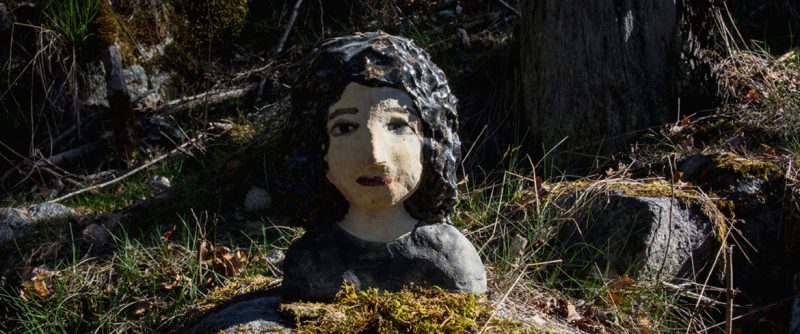Sculpture exhibition opens at Artipelag
This summer, Artipelag expands its artistic offering.The main exhibition, Bloomsbury Spirit, which is currently on show inside the art gallery, is now complemented by an outdoor exhibition called Detour.Here, the forests, meadows and water provide a natural backdrop for the sculptures. Visitors have the opportunity to explore the magnificent setting and how it interacts with the artwork.

Since its inception six years ago, Artipelag has established itself as an art museum with a special relationship with nature. The museum building’s sedum roof, tarred wooden walls and large panoramic windows all speak of an openness to the outside world. Thus, we usually describe our art gallery as a ”green room”, a kind of greenhouse for art.
Nature has become a prominent part of Artipelag’s philosophy of art. Several of our exhibitions have focused on different aspects of the Nordic romantic tradition. Platsens själ (Genius Loci), Ingen människa är en ö (No Man is an Island) and Earth Matters are just a few examples. We’ve also had Bigert & Bergström’s I stormens öga (The Eye of the Storm), which focused on ecology and sustainability. By arranging an outdoor art installation, we’ve taken a new step towards exploring the symbiosis between art and nature.
Here, neither the Swedish title, Omvägar, nor the English title, Detour, revolves around roadworks or an obstacle to reaching the goal. For us, these words are associated with positive experiences, such as interesting diversions and unusual moments that we may have experienced when travelling.
– Bo Nilsson, Director of Artipelag.
Each of the artists participating in the first part of Detour has a special relationship with nature, and their work is characterised by an ability to see a living creature in it. But while they share this ability, their works are markedly different from each other in terms of approach, material choice and size (the exhibits range from 50 cm to 10 m tall).
Most of the artists are Swedish and include Charlotte Gyllenhammar, Maria Miesenberger and Kennet Williamsson. Our neighbouring Nordic countries are represented by Per Kirkeby, Tal R and Idun Baltzersen. Even though Eva Schlegel and Jaume Plensa may not have a direct link to Nordic identity, they do have a relationship with the Nordic romantic tradition and approach to nature.
The exhibition will be in a constant transformation: some works will have a long exhibition life, while others will be replaced by new ones. The purpose of this is to create a particular dynamic in our surroundings and in the art experience.
By placing Detour beyond the architectural boundaries of the building, it’s an exhibition that is continuously evolving. It explores the relationship between art and nature, and invites you to discover the area surrounding Artipelag. It implies both a physical journey and a fictional landscape, and beckons you to embark on an intricate quest to explore the human aspect of the landscape. It’s a detour off the beaten track, where you can come across everything from geology to biology, astronomy to holistic world views.
About the exhibition
Contributing artists in 2018 are Idun Baltzersen, Joel Fisher, Charlotte Gyllenhammar, Per Kirkeby, Klara Kristalova, Maria Miesenberger, Lars Nilsson, Jaume Plensa, Tal R, Eva Schlegel, Ulrika Sparre and Kennet Williamsson.
Detour opened on June 7 and closes on November 4.
Press Contact
Gustav Idhammar, gustav.idhammar@artipelag.se, tel +46 (0)70-710 53 55
About Artipelag
Artipelag is a world-class meeting place where art shows, cultural activities, architecture, music, events, Swedish design, and good food are presented alongside the beautiful Stockholm Archipelago. Artipelag is located at Hålludden, on Värmdö – about 20 minutes by car from Stockholm city centre. The building is 10,220m2 and is carefully placed among pine trees and cliffs with magnificent views over Baggensfjärden. Artipelag was designed by the late architect Johan Nyrén.